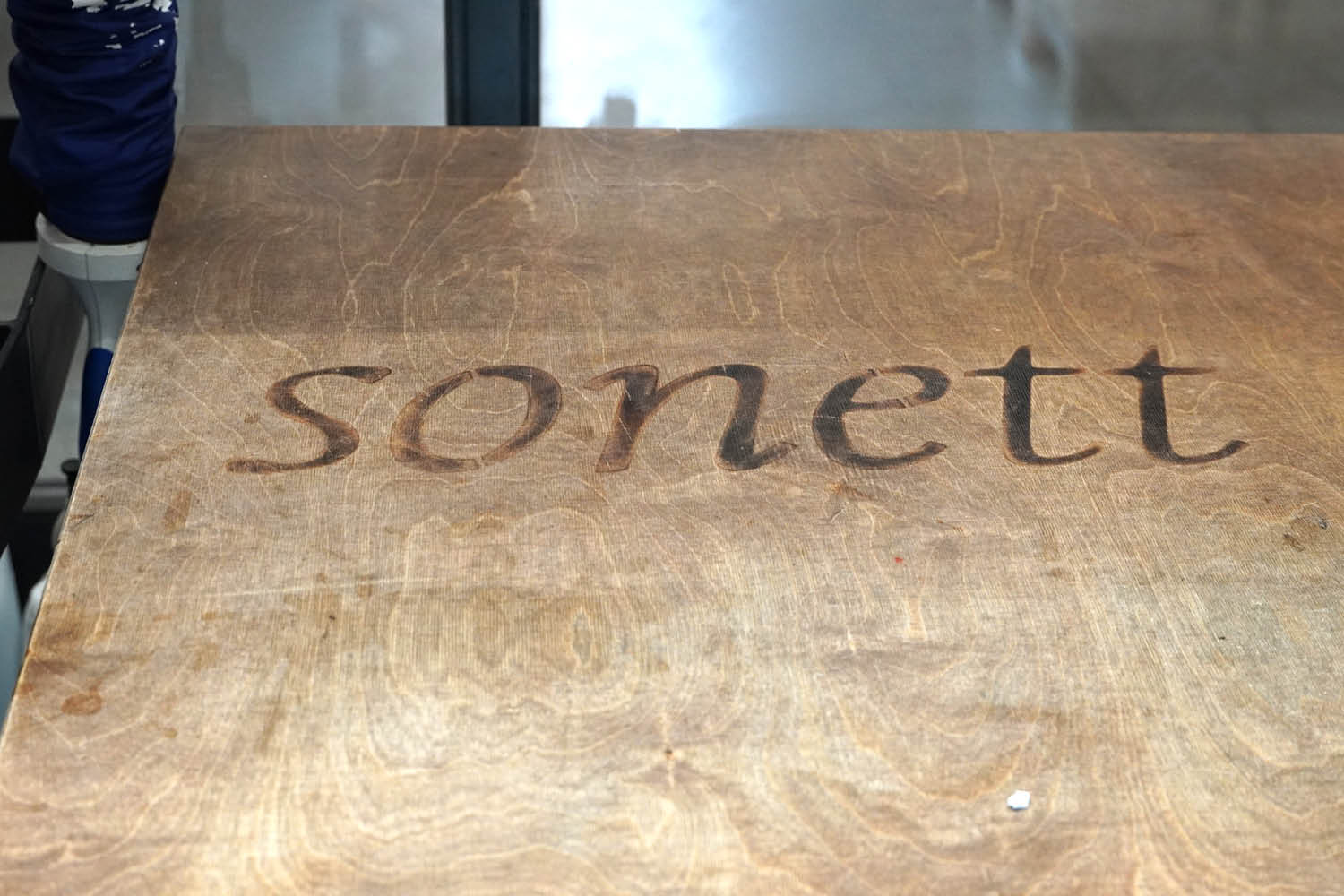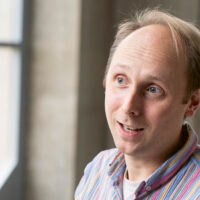What does the production of laundry detergents have to do with biodynamic agriculture? A visit to Sonett, the largest organic detergent manufacturer.
First impressions say a lot. Sonett’s factories are so well embedded in the natural surroundings of the southern Black Forest in Germany that we only discover them when we’ve practically bumped right into them. A moment later, this same kind of intimacy is reflected in our conversation as Managing Director Beate Oberdorfer and her successor Rebecca Kramer lead us around the site. Whenever I start to ask a question, Beate Oberdorfer immediately falls silent and really listens. How these buildings sit together with the landscape—that’s what she’s like in conversation. The buildings come to meet and offer a reflection of the landscape—the manager of the company truly meets me and engages in effortless, flowing conversation. She has a lot to tell me, especially about Johannes Schnorr, the chemist from the Institut für Strömungswissenschaften [Institute of Fluid Mechanics] in Herrischried, Germany.
Pioneer in Environmental Protection
Back in the 1960s, when no one was yet speaking about environmental protection, Johannes Schnorr discovered that surfactants, the active cleaning agents in petroleum detergents, pollute the groundwater because they’re not biodegradable. This alarmed him, so he developed a biodegradable powdered detergent in a modular system: softeners for hard, chalky water and bleaching agents for light-colored textiles. Schnorr’s goal was to create a detergent that breaks down on its way to the sewage treatment plant, releasing anything that went against the nature of water. Eventually, the soap could do just that. “It should also be able to be used sparingly,” says Beate Oberdorfer, describing Schnorr’s credo, which became that of Sonett. For 30 years, she and Gerhard Heid managed the destiny of the company and brought Sonett to the big stage. With the help of Albert Fink from the GLS-Gemeinschaftsbank [a German ethical bank], they took on control of the company, which had fallen under hard times due to the rush of liquid detergents that had come on the market; nobody wanted powder anymore. Now, the revenue they used to make in a year, they make in two days.

Inspired by Biodynamic Preparations
Beate Oberdorfer and Gerhard Heid were driven by two things: water and anthroposophy. Cleaning and washing are always about water. A particular mystery of this special carrier of life bars the way: its surface tension—its tendency to form a sphere. This is where active cleaning agents enter in. They take away water’s inherent inclination to form itself into droplets, but in so doing, they take something away from water’s inner nature. Through anthroposophical knowledge and feeling, the soap and water enter into a dialogue—like the buildings in the landscape, like Beate Oberdorfer in conversation. What the soap takes away from the water in terms of vitality, Sonett adds back through rhythms and substances. The developers have been inspired by biodynamic preparations. There the soil is healed, here the water.

Water, Full of Mystery
“When it’s in movement, water is alive,” says Beate Oberdorfer. “Vortices, waves, and meanders are the characteristic forms of movement by which water exists.” Sonett achieves this by using the oloid, a rolling form developed by Paul Schatz that is reminiscent of a figure eight. What water loses in nature is gained through culture. This commitment can be felt in an elongated, windowless room in the factory. What the Holy of Holies is in the temple, the mixing room is here. Three times a year, the oloid is rolled back and forth forty-nine times. The water flows in all its characteristic forms through the transparent oloid body. Frankincense, myrrh, and gold were the original substances they added to the water; olive, laurel, rose, and mistletoe were then added. According to Rebecca Kramer, the best part is when the container is opened at the end, and everyone is able to “smell it.” Pictures of crystallizations on the walls tell us what this is all about giving the water spiritual and cosmic life. All Sonett products are mixed with this medicine in homeopathic doses. Very few people may know anything about this, and yet they can probably sense it.
Unpacked
In 2019, their sales partners at Unverpackt [Unpacked] suggested that their product containers could be reusable. They developed a container-cleaning machine at the company. The containers that break are shredded, and the plastic is recycled. 250 Unverpackt shops now return containers so that eighty percent of containers are reused. The shredded plastic is returned to the manufacturer, who then makes new bottles and containers from up to fifty percent of this plastic. We then walked through the bottling plant, a surprisingly small space for the forty tons of detergent that are processed here every month.

Intuition and Empathy As Guides
During the tour of the Sonett company, I sensed a kind of threefold breathing: a vital pulse, in and out, as Rebecca Kramer and Beate Oberdorfer talked enthusiastically about working together with their team of thirty-four special needs co-workers from nearby Camphill Lehenhof, and, with just as much wonder, they showed me the robotic arm that magically sorts the packages. Then, a second breath: the far distances of past and future in interplay, as Rebecca Kramer describes the life’s work of Beate Oberdorfer and Gerhard Heid, as both eagerly listen. Finally, a third rhythm: a harmony of polarities. Beate Oberdorfer and Gerhard Heid sit opposite me like birch and oak, sensitivity and energy, Venus and Mars. During the challenging coronavirus time, Gerhard Heid tells me warmly that it was Beate Oberdorfer’s intuition that led the way. Empathy flows between the two of them, empathy that gives the enterprise its soul—like the essences in a detergent.
Translation Joshua Kelberman
Title image Beate Oberdorfer, Managing Director of Sonett (right) and her successor Rebecca Kramer. All photos: Wolfgang Held









